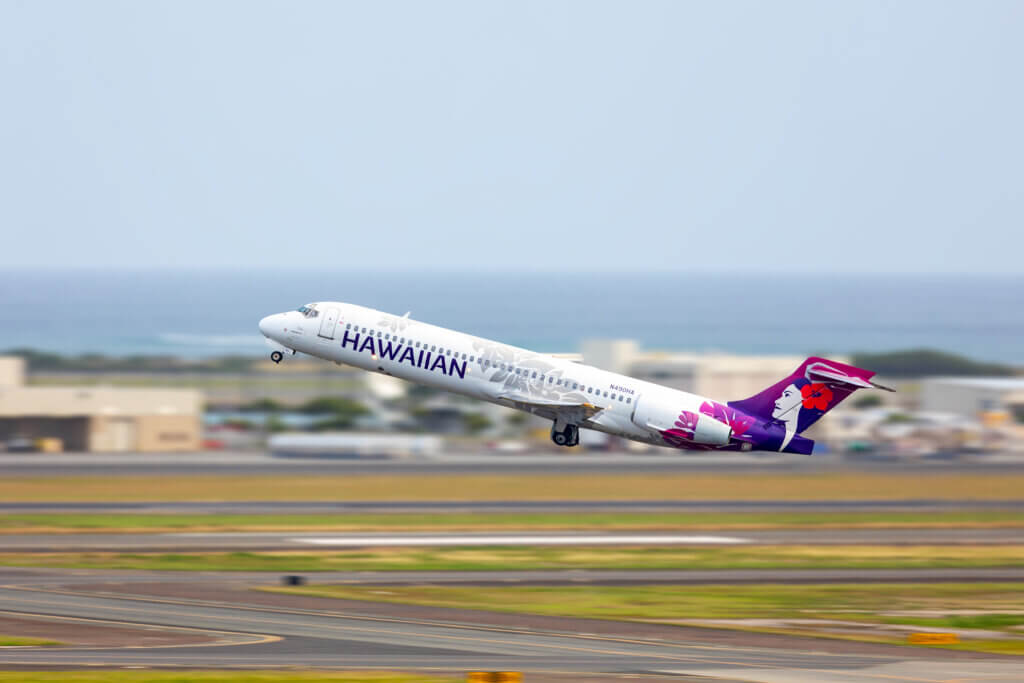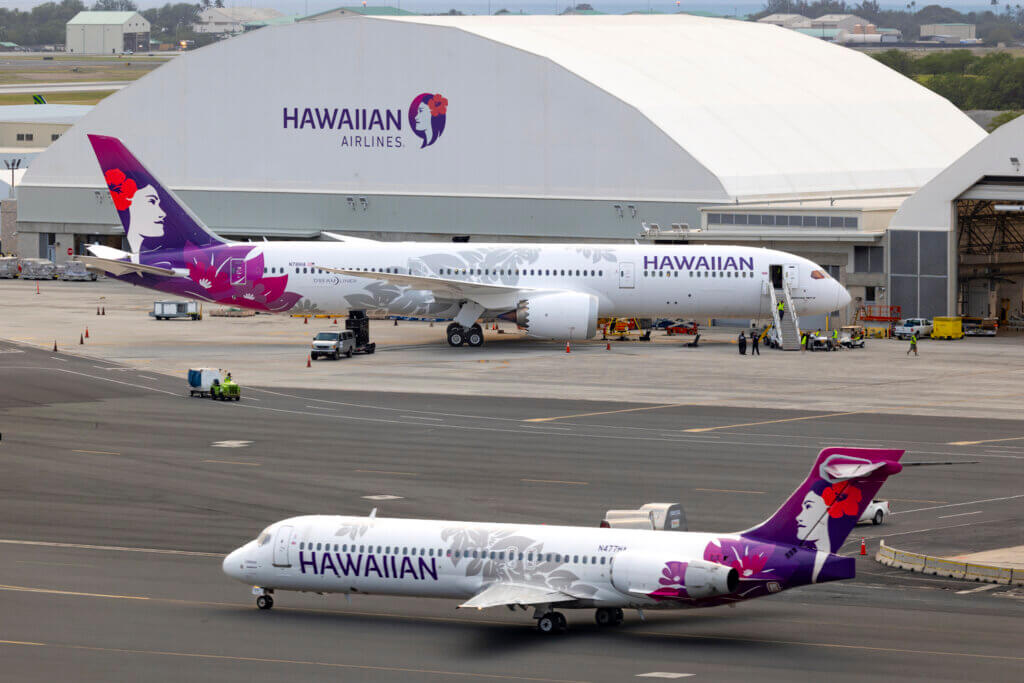The other week, the incredible Sam Chui hopped aboard Hawaiian’s inaugural SFO-HNL Boeing 787 flight. There were several surprises in his video and companion write up, including the fact that Hawaiian has paused its 717 replacement study.
Like any AvGeek, I enjoy watching Sam Chui’s videos. However, during his Hawaiian Airlines Boeing 787 video, he revealed that he had never flown Hawaiian up until that point. Ever. Yes, he has been in Hawaii before, specifically to review the first flights of ANA’s Airbus A380 “Flying Honu” service. But for that he flew both the initial NRT-HNL and HNL-NRT flights.
Given the level of access he enjoyed during his video, and the fact that he also got a ride on Hawaiian’s historic Bellanca CH-300 Pacemaker, I suspected that he had arrangements with the airline. That suspicion was confirmed when he posted a blog post covering an interview he had with Hawaiian’s CEO, Peter Ingram. However, in that interview, Ingram revealed a somewhat surprising detail – Hawaiian has paused its 717 replacement study. Though, perhaps, that bit shouldn’t be all that surprising. Let’s discuss.
Hawaiian Has Paused Its 717 Replacement Study
Hawaiian’s fleet of Boeing 717-200s, also known as the McDonnell Douglas MD95, is the workhorse of their critical intra-Hawaii network. However, each and every one of these birds were produced between 2001 and 2006. In fact, the final 717 rolled out of McDonnell Douglas’ Long Beach final assembly line in April 2006. That means the youngest of these birds is now 18 years old – that’s pretty old for aircraft that has spent their entire operating lives on these punishing, high-frequency routes.
A replacement is needed sooner rather than later, but we’ll have to wait a bit longer to learn what will ultimately replace the gorgeous birds, as Hawaiian has paused its 717 replacement study.
Now, if we take a minute to think, it shouldn’t be a surprise at all that Hawaiian has paused its 717 replacement study. After all, back in December, Alaska Air shocked the world when it announced that Hawaiian Air had agreed to be acquired by them. In a Q&A that followed the announcement, Alaska CEO, Ben Minicucci, stated that replacing Hawaiian’s 717s with Boeing 737 was a possibility.
As you’ll recall, Hawaiian omitted the Boeing 737 from its 717 replacement list. In his interview with Sam Chui, Ingram notes that the 737 doesn’t provide any commonality with its current fleet of Airbus A330s, A321neos, or Boeing 787s, and that’s why they weren’t included. That’s also why they were looking at the A320 family, which I always thought as odd given their significantly higher capacity (compared to the 717) and the issues Hawaiian continues to experience with the PW1100Gs on their A321neos.
Apparently, when Hawaiian said they were considering A320s, they weren’t referring to neos. According to Ingram, their intent was to look at previously flown A320ceos or A319s for inter-island flying. That makes sense, as buying these older birds would reduce costs and preserve fleet commonality, minimizing training expense, though it would introduce another engine type into Hawaiian’s fleet.
But back to commonality and the 737 – that remark by Ingram didn’t make sense to me, as they were also considering the A220 and Embraer E195, both of which have no commonality with the A321neo or Boeing 717. But, hey, he calls the shots, so if that’s what his team’s rationale was, that’s what it was.
On the 787
While my big takeaway from the interview was the fact that Hawaiian has paused its 717 replacement study, the conversation naturally focused primarily on Hawaiian’s shiny new toy – the Boeing 787-9. Per Ingram, the 787s will be a blend of additions to and replacements for the Airbus A330. This indicates that they are considering extending leases on their older A330s further than currently planned. However, Alaska did say those upcoming lease provide opportunities to them as well – either for immediate disposal or added capacity.
That said, with 34 Leihoku Suites in a 1-2-1 configuration, the 787 is significantly more premium-heavy than the 18 seats arranged in a 2-2-2 configuration on the A330. Ingram states that they’re confident that there’s enough of a demand for premium in certain markets to fill those seats at high enough prices to justify their existence. However, he also acknowledges that they were looking at a lower number, but that at a certain point, it just made sense to fill the cabin with Leihoku Suites up to the second set of doors.
So, what markets is Ingram talking about? Primarily, it’s Los Angeles. It seems that the 787 will remain in service to LAX for the foreseeable future because of the premium demand there, along with the ability to conduct maintenance overnight there. This also makes sense from a sheer volume perspective, as the 787-9 in Hawaiian’s configuration carries 300 passengers versus the 278 of the A330. LAX-HNL is, traditionally, Hawaiian’s busiest trans-Pacific route, with three regularly scheduled flights per day.
Beyond LAX, Ingram notes that the economics of the 787 makes it the ideal aircraft to operate the airline’s longer routes. As such, as more aircraft arrive, we’ll see them deployed to places like New York, Boston, and Sydney. Tokyo Haneda is a contender for 787 service, but demand has to rebound to pre-COVID numbers before Hawaiian considers assigning the carbon birds to the Japanese market.
Hawaiian Has Paused Its 717 Replacement Study, Final Thoughts
On the one hand, I think it’s logical that Hawaiian has paused its 717 replacement study. After all, if Alaska Air does end up acquiring them, there are additional considerations to make, especially since Alaska is a major Boeing 737 and Embraer E170 operator. The later’s larger sibling, the E195, is still my vote for the most logical Boeing 717 replacement.
At the same time, pausing the study is assuming that the merger will clear anti-trust reviews. I’m confident that Alaska and Hawaiian will receive the required approvals, but what if they don’t? Then what? Hawaiian wants to begin replacing its 717s around 2030 – that doesn’t give a heck of a lot of time, especially with aircraft types that already have full order books.


